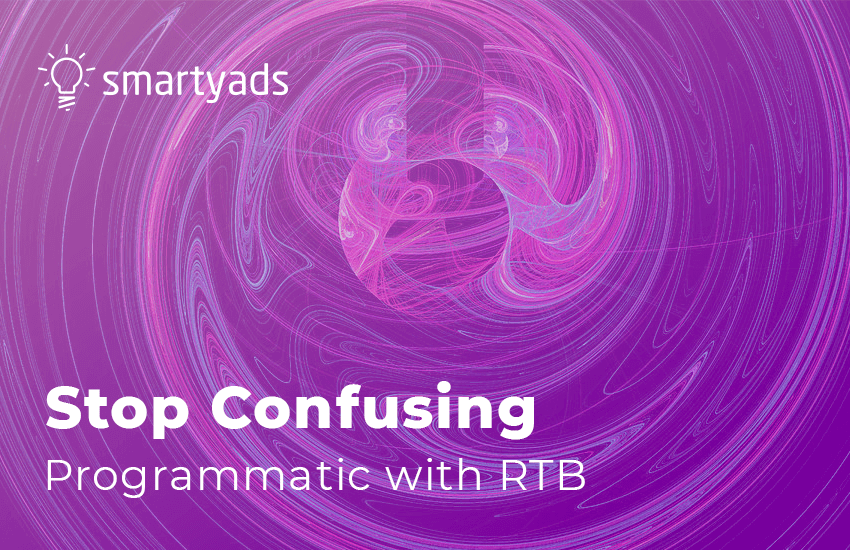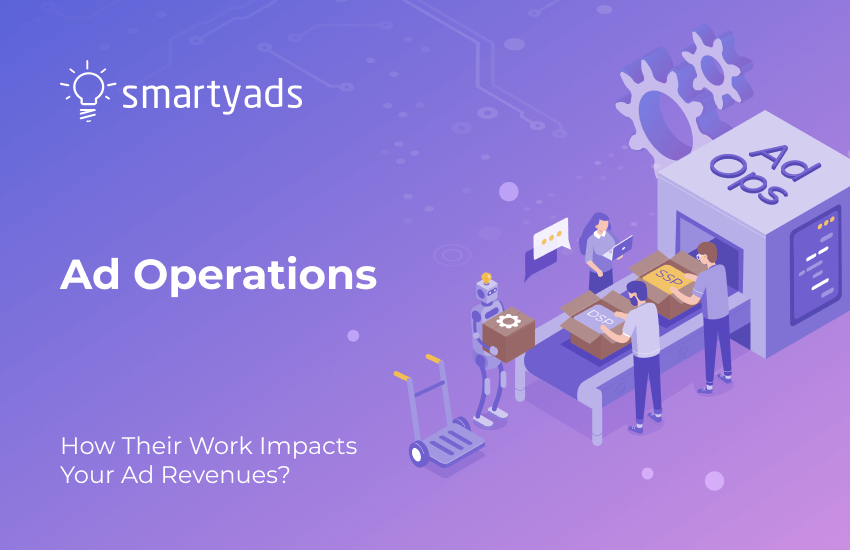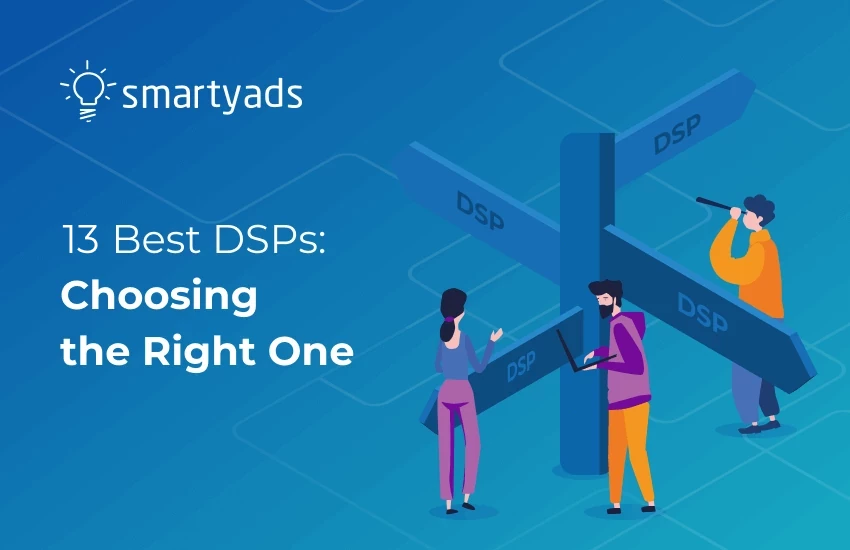If you're guilty of not understanding the difference between programmatic and real-time bidding (RTB), you're not alone. Although programmatic and real-time bidding may seem the same to you, there is a difference between them. Not all programmatic advertising has real-time bidding in its system.
Programmatic advertising can contain many nuances, unfamiliar abbreviations, and refer to obscure ad formats. However, here we want to talk about real-time bidding, media buying, and programmatic.
If you don't understand the main features of programmatic and real-time bidding and can't draw a line between these confusing terms, then this article is for you.
What is Programmatic Media Buying?
By definition, programmatic is an ad network that is automated and running according to a program, algorithm, or schedule.
Media buyers are thus responsible for defining brand programmatic advertising campaigns, managing budgets, negotiating with publishers, and optimizing advertising for maximum profit.
Today, media buying is performed according to two methodologies:
- Through programmatic direct purchase: the publisher and the advertiser agree, and the latter buys ad spaces from the first one.
- Through Programmatic Buying, i.e. using an automated process of buying and selling ad spaces, the purpose of which is to show advertisements for the users in which they may be interested.
When applied to digital advertising, programmatic buying is just a buying method accomplished via machine technology to enhance and optimize ad buying and ad spend on an ad exchange.
Programmatic media buying is the data-driven process of purchasing digital ad space at a large scale with the help of automated software based on complex algorithms.
Programmatic ad campaign allows hyper-personalized targeting with agile messaging across all paid advertising. It replaces the manual process of media buying with automated solutions, therefore eliminating the risks associated with human error.
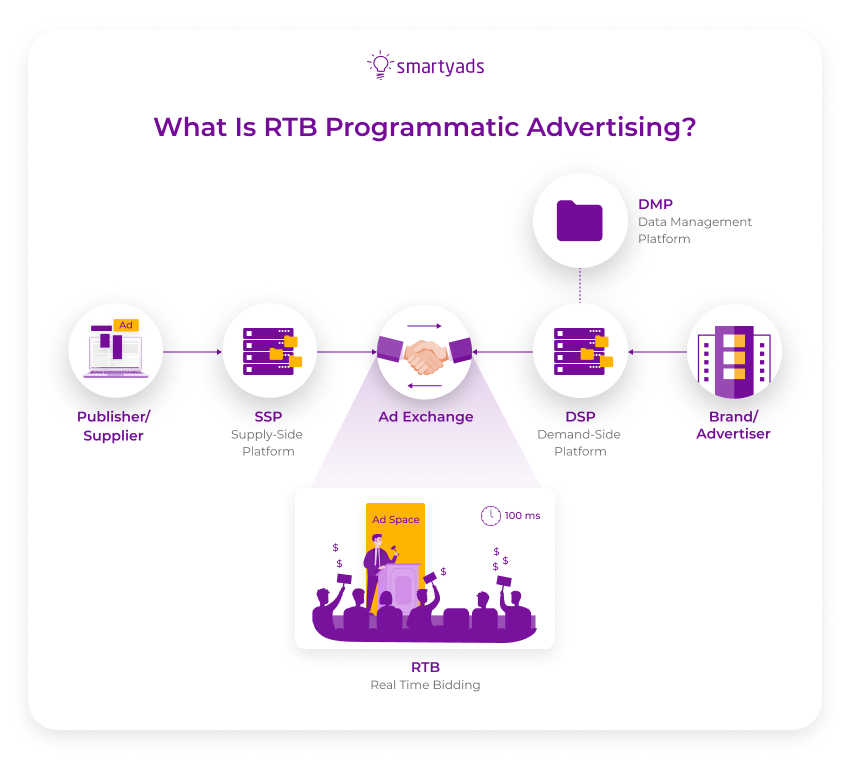
Media buying or media planning?
Often confused, media buying and media planning are two different things. The first one aims to get the most hits and reach the right audience, and the second focuses on the strategy behind the advertising campaign.
The planning phase decides on the most effective media to reach the target audience. Once media planning is completed, the purchase of advertising spots follows.
What are the Main Features of Programmatic Buying?
Artificial intelligence (AI)
The beauty of programmatic buying is in the use of artificial intelligence (AI) technologies such as machine learning and deep learning.
Machine learning uses algorithms to inspect data, learn from it, and make a prediction or a judgment over it, such as foreseeing the success of a given online advertising campaign or estimating ROI or user engagement.
The machine learns and evolves over time, enhancing the performance of the campaign and reacting instantly to ever-changing market dynamics. The AI algorithms find trends in individual consumers and adjust their programmatic advertising and online experience accordingly.
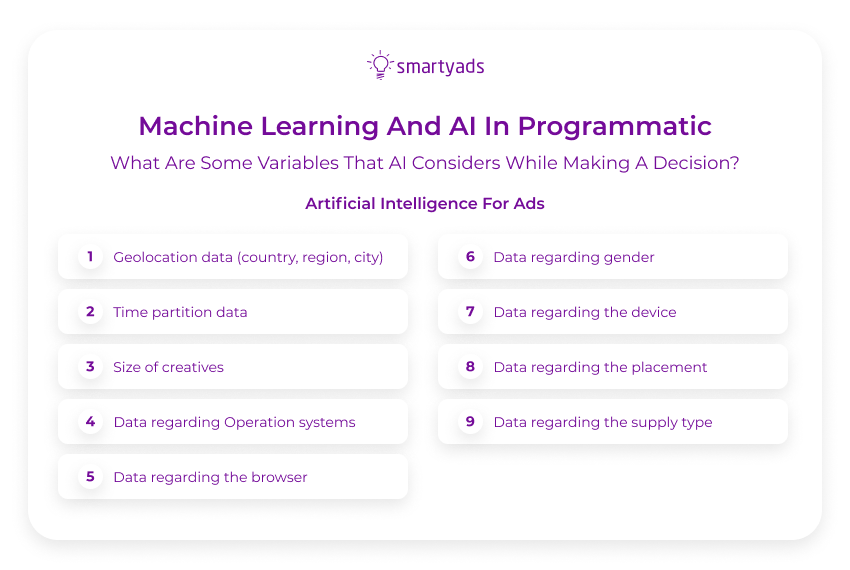
Deep learning
With the implementation of deep learning algorithms, computers will be able to learn from their mistakes, track everything, and make connections and decisions that humans may not have even considered.
Deep learning will allow the building of more accurate online consumer profiles and make scrupulous predictions based on actual use rather than proposed usage.
Therefore, programmatic buying not only provides valuable data but also delivers important insights. Advertisers receive feedback on how the audience is engaged with the ads and what factors affected the ad's success.
For instance, using programmatic buying allows advertisers to know which age group performed best and what time of the day or week was relevant.
Hence, advertisers can constantly adjust their targeting strategy and ensure consistent ad delivery. Besides, there is an article about things you need to know about programmatic buying.
Basic and advanced targeting
Basic Targeting
Basic targeting includes the simplest and most common settings used when creating campaigns. It offers customization by basic characteristics such as GEO (country, region, state, etc.), format, banner size, or categories related to your traffic.
Typically, basic targeting allows you to choose your traffic category, ad format, and country which you want to buy traffic from.
Precise targeting
Another unique technology offered by programmatic media buying is precise targeting. Your target audience is now available based on certain metrics obtained through algorithms.
Compared to the Mad Man era when advertising was more about creativity with little understanding of the consumers, now it is more about placing the ad in the right context to the right people regardless of the ad placement.
Pulling the information about potential customers from first- and third-party data, advertisers can serve their ads to a specific audience segment on any website. Such targeting options as gender, age group, location, household income, and relationship status allow a hyper-personalized marketing approach.
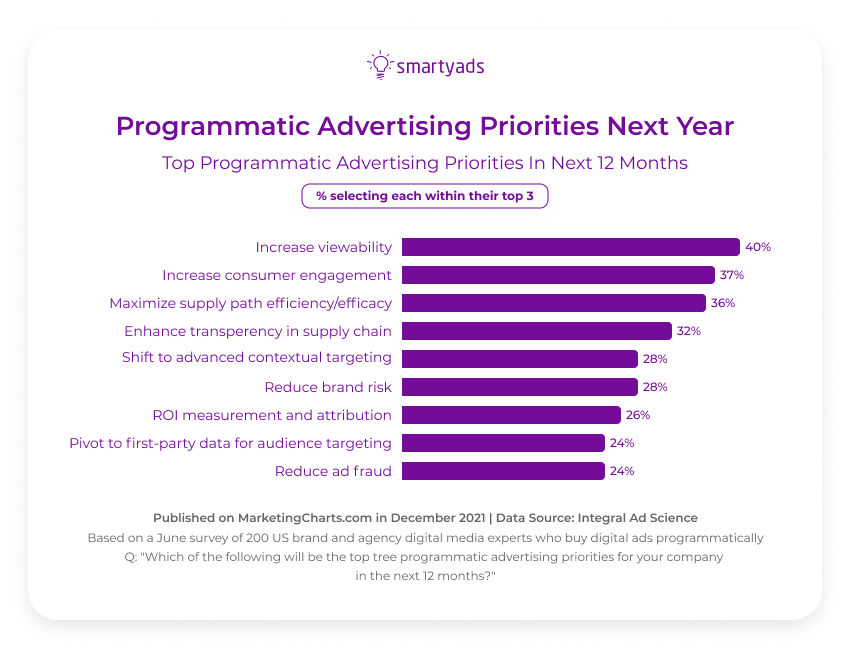
What is Real-time Bidding (RTB)?
Real-time bidding (RTB)
It is a form of programmatic buying (What is RTB?). Many people tend to think that RTB is the only way to buy media programmatically; however, that is not true. Although real-time bidding accounts for more than 90% of all programmatic buying, not all advertisers use real-time auctions for purchasing.
Private Marketplace
Private Marketplace (programmatic guaranteed), or PMP for short, is a variation of the RTB model, available by invitation only. It is an auction process in which multiple advertisers bid against each other to buy publisher resources.
Programmatic direct deals: the safest ad space
Alternatively, advertisers may use programmatic direct, which is a more traditional form of buying ad space using programmatic technology and does not involve real-time bidding at all.
In programmatic direct, digital ad inventory is sold directly to advertisers without bidding but with some prior negotiation with a publisher.
Therefore, programmatic direct methodology vastly surpasses the limitations of RTB. Real-time bidding can be seen as a subset of programmatic, a piece of a much bigger puzzle.
What is so good about RTB programmatic advertising?
Real-time bidding
It is an online ad exchange for buying and selling ad impressions in real time. Such an ad exchange occurs in the time it takes for a webpage to load — mere milliseconds.
Real-time bidding programmatic buying is beneficial for publishers and advertisers. Marketers achieve major efficiencies by showing their ads to the right audiences and decreasing wasted impressions, while publishers enhance the value of their ad space and improve direct sales strategy and pricing.
Real-time bidding (RTB) ecosystem's components from demand-side platform (DSP) and ad exchanges to brand protection:
- DSP (demand-side platform): A system that allows buyers of digital ad inventory to manage multiple ad networks and data exchanges through a single interface;
- SSP (supply-side platform): A platform to help publishers to manage and price their ad inventory that is also referred to as yield managers and optimizers;
- Ad Exchanges: A digital marketplace that connects publishers that sell ad places and advertisers that bid against each other to receive the ad place, the winning ad with the highest bid receives the display;
- Ad Networks: A company that aggregates ad space supply from publishers; ad networks classify it and resell it to advertisers in bulk;
- Advertising agency buying/trading desks (ATD): A media buyer and re-seller that manages programmatic media and acts like an independent working unit;
- Ad verification and brand protection platforms: A platform that investigates audiences, media destinations, and advertisers to assure that the ads are placed appropriately.
Bottom line
RTB is just a form of a much bigger technology, which is called programmatic advertising. To understand the logic, imagine a lemon. The lemon is sour. Sour is the taste characteristic of the lemon.
However, not everything that is sour is a lemon, right? RTB is programmatic, but not everything that is programmatic is RTB.
